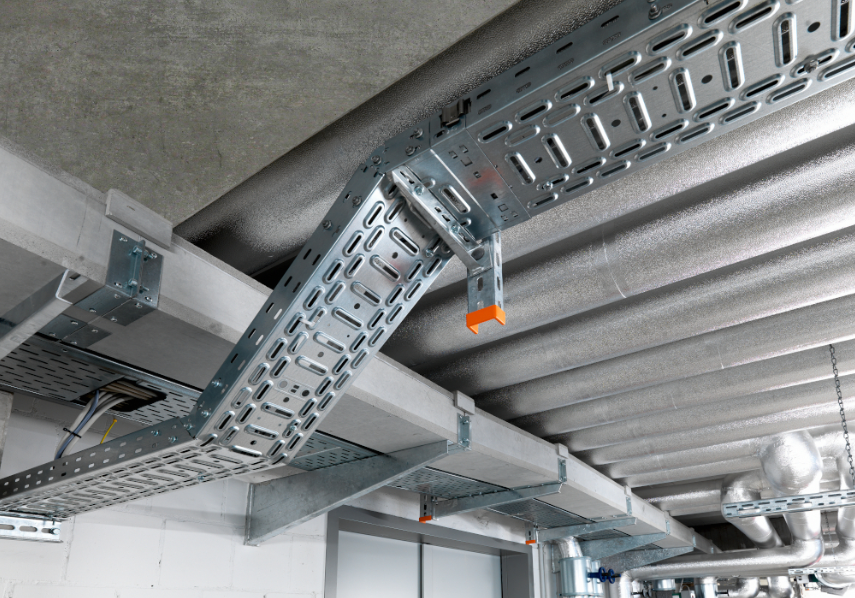Cable trays are essential components of electrical systems, providing a safe and organized way to manage and support cables. They play a crucial role in ensuring the safety and efficiency of electrical installations in various settings. In this article, we will break down the applications of cable trays.
1. Cable Management and Organization
They provide a structured system for routing and supporting cables, preventing them from becoming tangled, damaged, or hazardous. By neatly arranging and securing cables within the tray, they can be easily identified, accessed, and maintained. This organized approach simplifies troubleshooting, repairs, and maintenance, ultimately contributing to a safer and more efficient electrical system.
2. Support and Load Distribution
They are designed to support and distribute the weight of cables. They provide a sturdy and reliable framework that prevents excessive bending, sagging, or strain on cables. By evenly distributing the load across the tray, cable trays minimize the risk of cable damage and ensure the longevity of the electrical installation.
3. Cable Protection and Safety
They shield cables from potential hazards such as mechanical damage, moisture, chemical exposure, and accidental contact. The tray’s design often includes side rails or covers to provide additional protection and prevent unauthorized access. By containing and safeguarding cables within the tray, they reduce the risk of electrical faults, short circuits, and electrical hazards, promoting overall safety in the installation.
4. Flexibility and Adaptability
They offer flexibility and adaptability to accommodate changing electrical requirements. They can be easily modified, expanded, or reconfigured as the needs of the system evolve. This flexibility allows for the seamless integration of additional cables or the repositioning of existing ones without the need for extensive rewiring.
5. Importance of Cable Ducts
While they excel in cable management and support, cable ducts complement their functionality in certain applications. A cable duct, also known as a conduit system, provides an enclosed pathway for routing and protecting individual cables or smaller cable bundles. They are particularly useful in situations where cables need additional protection from external factors like moisture, dust, or chemical exposure.
Conclusion
In conclusion, cable trays play a crucial role in ensuring safety, efficiency, and organization in electrical systems. Their applications include cable management, support, protection, and adaptability. By utilizing them and considering the use of cable ducts where necessary, electrical installations can be well-organized, secure, and easily maintained. Prioritizing proper cable management and safety measures with the help of them ultimately promotes a reliable and safe electrical infrastructure.


